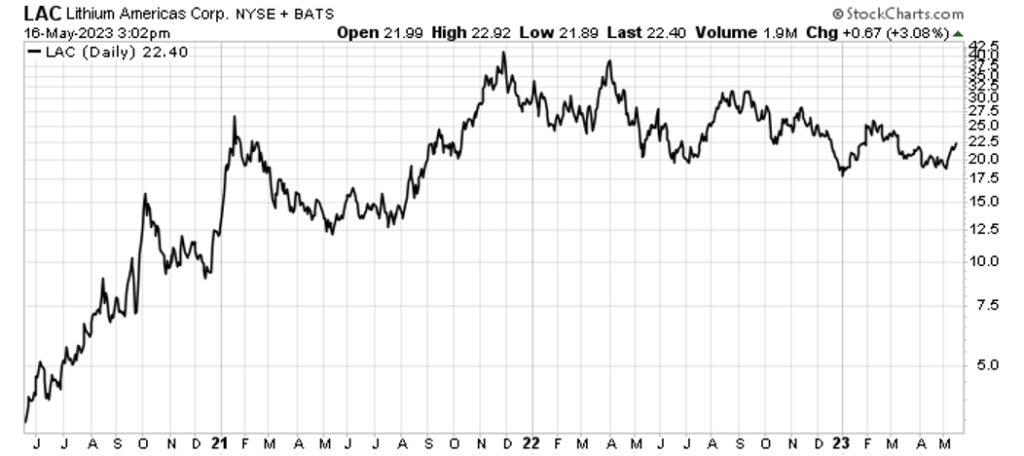

How EV Money Could Change Mining for the Better Right Now
How EV Money Could Change Mining for the Better Right Now
On May 15th, the Wall Street Journal (WSJ) published an article titled: The New EV Gold-Rush: Automakers Scramble to Get Into Mining. Mining CEO’s all over the world simultaneously broke into a sweat and began salivating.
Mining is a capital hungry business. It takes a huge amount of cash to turn a pile of rocks into a business. And over the past twenty years, much of the capital moved to greener pastures. For example, it takes one growing season for risk capital to see a return on marijuana. Even early-stage drug research has a better return, because the drugs can be sold for an enormous profit right away.
But mining sucks. I actually wrote an essay with that title, years ago.
What mining needs is enough capital to explore, develop, and produce metal without the need to cut corners. And that could be coming from an unlikely source: car makers.
The WSJ article cited General Motors’ plan to fully switch to electric vehicles. In it, they quoted an industrial engineer who is now in charge of securing raw materials for GM’s batteries. In 2020, they thought you could just buy lithium or nickel on the open market. The reality is far different. And now we have the odd couple of industry, trying to work together:
Now, car companies are playing the role of both investors and customers. Many are using their deep pockets to help get mines up and running, while guaranteeing to purchase the extracted materials.
The result is a haphazard alliance of two sectors that in many ways make strange bedfellows.
The car business is ruled by rigid factory schedules and the clockwork precision of its vast, global supply chain. In mining, cost-overruns and delays are commonplace, and even the most sophisticated operators don’t always know if these risky ventures will pan out.
The capital is moving closer to mining. Tesla invested $6.2 billion into a lithium-ion battery and EV Component factory near Reno Nevada. Car companies spent billions into electric vehicle factories. But a big catalyst for that development are the tax breaks laid out in the recently passed Inflation Reduction Law. And that legislation says you can’t get the full benefit unless the metals come from specific areas, mainly North America.
The largest mining beneficiary of the deal is Vancouver-based Lithium Americas (LAC). They have a joint development agreement with General Motors on the Thacker Pass project in Nevada. You can see the impact of that agreement on its share price:

The sad truth of the matter is that the big mining companies paid out billions in dividends and share buybacks. That was money that should have gone into exploration and development. But the companies chose to repay shareholders first.
That’s a sentiment that I can understand. But in mining, capital is critical. And sometimes growing the business over the long term is a better investment than paying a few cents per share in dividends in the short term.
Good Investing,
Matt Badiali
Numbers to Know
Dozens
Dozens of electric vehicles are set to debut in 2024. Many automakers have detailed plans to electrify large portions of their fleets over the next decade, with some announcing goals for fully electrified lineups within five years. (Consumer Reports)
516
Is the highest miles range for a 2023 Electric Vehicle model. (Car and Driver)
1830’s
The first Electric Vehicle was driven in the 1830’s. Some see Electric Vehicle’s as something new but they were around even before the first gas powered car. (Car and Driver)
What’s New in Sustainable Investing
Republican-led states move to block Biden ESG investing rule
Lawyers for the 25 states led by Utah and Texas filed federal court late Tuesday saying the U.S. Department of Labor failed to justify its departure from a Trump-era rule that limited investing based on environmental, social and corporate governance (ESG) factors. (Reuters)
Chili’s losing ground in the Lithium market so plans for state control
The global boom in electric vehicle production has sent demand for lithium-ion batteries soaring. That’s turned Chile’s vast, lithium-containing salt flats into a vital national resource. (CNBC)
Video Of The Week
Can California’s Salton Sea be the Saudi Arabia of Lithium?
Known as the Lithium Valley it could power the Electric Vehicle future.




